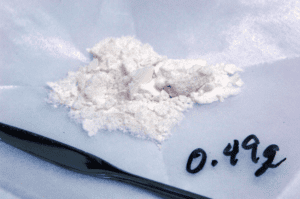
NES in Emergency Management Magazine
Written by: NES, Inc. Staff
Brian Escamilla in Emergency Management Magazine
NES Clan Lab Program Manager Brian Escamilla was recently featured in a Q&A article in Emergency Management magazine. Brian utilizes his expertise, gained from over 20 years of clan lab response and training experience, to inform first responders and law enforcement officers on the dangers of fentanyl and other synthetic drugs.

Q: What synthetic drugs present the most significant threats to police officers, firefighters and other first responders?
A: Fentanyl, fentanyl analogs and other emerging synthetic drugs have not only killed users, but are serious threats to first responders. These drugs are extremely potent, and in the case of fentanyl, they are transdermal and readily absorb through the skin. Because they are potent in small doses, they are commonly mixed with and masked by other compounds, making them difficult to identify. Many of the chemicals used to manufacture drugs are toxic, flammable and explosive. On an average week, three to five illicit drug labs burn down or blow up. Extremely toxic gases and vapors are also produced during production. These toxic, flammable and explosive scenes are a serious risk to all first responders.
Q: What risks do these drugs pose to first responders and law enforcement officers?
A: Exposure can be lethal – there are instances over the past year where officers have been exposed to fentanyl and came under medical duress. Naloxone was administered to subside these effects, which is the best antidote for any opioid drug — but it must be administered quickly. Exposure to fentanyl will cause respiratory depression, which can quickly escalate into other life-threatening medical conditions.
Q: How have synthetic drugs changed a first responder’s job? How can they better protect themselves?
A: First responders must wear proper protective equipment and take steps to avoid contact
with drugs as well as the chemicals used to manufacture them. Some of these drugs can be absorbed quickly. Depending on where fentanyl contacts the skin, 46 to 66 percent of a dose can be absorbed into the body. If a drug i s extremely potent or toxic, a first responder could start feeling ill within minutes of an exposure, maybe even seconds.
s extremely potent or toxic, a first responder could start feeling ill within minutes of an exposure, maybe even seconds.
First responders should wear personal protective equipment when handling evidence, suspects or overdose victims in case potent synthetics are present. These synthetic drugs can be in the air, on the individual’s skin or clothing, or on any surface or item at the scene. If first responders are exposed, they could suffer serious health effects.
Q: What can public safety agencies do to better protect the health and safety of their first responders?
A: The most important action to take is to provide first responders with awareness training. Anyone who could handle narcotics or be present in an area where narcotics are synthesized, packaged, dispensed or used needs training and the proper protective equipment. First responders need to recognize these new synthetics drugs, narcotic manufacturing trends, and the signs and symptoms of exposure to the drugs or chemicals. Rapid recognition can save a life.
Click here to view the original article in Emergency Management magazine.
